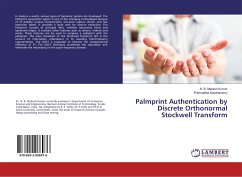
Broschiertes Buch
2024
Verlag Unser Wissen

20,99 €
Versandfertig in 6-10 Tagen
Broschiertes Buch
30. Oktober 2017
LAP Lambert Academic Publishing
Statt 27,95 €**
18,99 €
**Preis der gedruckten Ausgabe (Broschiertes Buch)
inkl. MwSt. und vom Verlag festgesetzt.
Sofort per Download lieferbar
Statt 39,99 €**
29,99 €
**Preis der gedruckten Ausgabe (Broschiertes Buch)
inkl. MwSt. und vom Verlag festgesetzt.
Sofort per Download lieferbar
Finger Knuckle-Print Authentication Using Fast Discrete Orthonormal Stockwell Transform (eBook, PDF)
eBook, PDF
3. November 2017
Diplom.de
| Broschiertes Buch | 39,99 € |
21,99 €
Versandfertig in 6-10 Tagen
Broschiertes Buch
12. August 2024
Edições Nosso Conhecimento
21,99 €
Versandfertig in 6-10 Tagen
21,99 €
Versandfertig in 6-10 Tagen
Broschiertes Buch
12. August 2024
Editions Notre Savoir
21,99 €
Versandfertig in 6-10 Tagen
Broschiertes Buch
12. August 2024
Edizioni Sapienza
Ähnlichkeitssuche: Fact®Finder von OMIKRON
